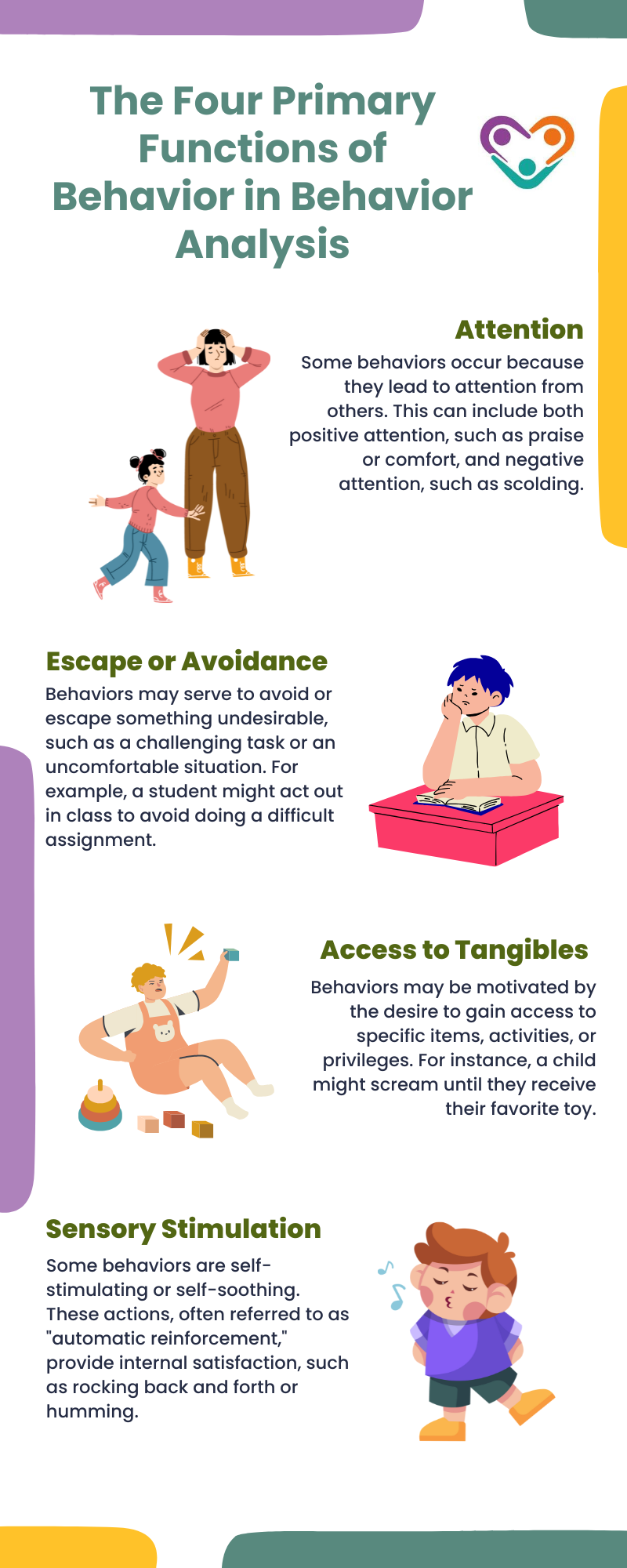Functional analysis is a systematic method for identifying specific behaviors’ underlying reasons or causes. It is widely employed in various fields, including psychology, education, and behavior analysis, to help address and modify problematic or disruptive behaviors.
Understanding the “why” behind actions is what makes functional analysis effective in allowing caregivers, therapists, and educators to create effective interventions tailored to individual needs.
At its core, functional analysis is about observation, hypothesis testing, and intervention. It acknowledges that behaviors, whether they are desirable or not, serve a purpose for the individual performing them. Understanding that purpose is the key to addressing the behavior effectively.
What is Functional Analysis?
Functional analysis is a systematic method used in behavioral psychology to identify the factors that contribute to specific behaviors, particularly problematic or challenging ones.
The process involves checking the antecedents (what happens before a behavior), the behavior itself, and the consequences (what happens after the behavior) to understand its purpose or function. This approach is rooted in the idea that all behaviors serve a purpose, whether it is to gain something desirable, avoid something unpleasant, or fulfill a sensory need.
Through the gathering of detailed information through observation, interviews, and structured assessments, practitioners can determine the triggers and reinforcers that maintain the behavior.
The insights from functional analysis are crucial for developing effective intervention strategies tailored to an individual’s needs. Rather than focusing solely on stopping unwanted behavior, this method emphasizes teaching alternative behaviors that serve the same function more appropriately or adaptively.
For example, if a child exhibits disruptive behavior to gain attention, a functional analysis might lead to interventions that teach the child how to ask for attention appropriately.
Functional analysis is widely used in fields like ABA therapy and is particularly beneficial for individuals with developmental disorders, such as autism, where understanding and addressing the root cause of behaviors is essential for meaningful progress.
The Foundation of Functional Analysis
Every behavior has a function. For example, a child may throw a tantrum to gain attention, avoid a task, or communicate an unmet need. The goal of functional analysis is to uncover this function by examining the context, triggers, and consequences of the behavior.
This approach is rooted in the principles of ABA therapy, which emphasizes the relationship between behavior and its environment.
Functional analysis typically involves observing the behavior in question and collecting data about when, where, and under what circumstances it occurs. This information helps to identify patterns and potential triggers. The process involves a careful and structured approach to ensure accurate conclusions.
Key Components of Functional Analysis
That said, functional analysis has several key components for it to be effective. These components are as follows:
Antecedents
Antecedents are the events or conditions that occur before the behavior. They act as triggers or prompts. For instance, if a student exhibits disruptive behavior during math class but not during other subjects, the antecedent might involve difficulty with math or a lack of engagement in the lesson.
Behavior
This refers to the specific action or response being analyzed. It is important to define the behavior clearly and objectively. For example, instead of saying “the child is aggressive,” it is more precise to state, “the child hits others with their hands when they are asked to share toys.”
Consequences
Consequences are the events that follow the behavior and influence its future occurrence. These could include receiving attention, escaping a demand, or gaining access to a desired item. Understanding the consequences helps identify the function of the behavior.
That said, functional analysis typically identifies one or more of the following functions behind behaviors:

How Functional Analysis is Conducted
Conducting a functional analysis involves several steps, often tailored to the individual and the context in which the behavior occurs. Here is a general outline of the process:
Identifying the Behavior
The first step is to clearly define the behavior in observable and measurable terms. This ensures that everyone involved in the analysis understands exactly what is being studied.
Gathering Information
Information about the behavior is collected through interviews, questionnaires, and direct observation. Caregivers, teachers, and others who interact with the individual may be involved in this phase.
Developing Hypotheses
Based on the information gathered, hypotheses are formed about the function of the behavior. These hypotheses guide the next phase of testing.
Testing Hypotheses
The testing phase often involves manipulating environmental factors to observe changes in the behavior. For example, if the hypothesis is that a behavior occurs to gain attention, scenarios are created where attention is either provided or withheld to confirm or refute the hypothesis.
Creating an Intervention Plan
Once the function of the behavior is identified, a tailored intervention plan is developed. This plan typically includes strategies for reducing the problematic behavior and promoting more desirable alternatives.

Ethical Considerations in Functional Analysis
Functional analysis is a powerful tool, but it must be conducted with care and sensitivity. Ethical considerations are crucial to ensure the individual’s well-being and dignity. These considerations include:
- Informed Consent: Obtaining permission from the individual or their guardians before starting the analysis.
- Minimizing Harm: Ensuring that any procedures used do not cause undue stress or discomfort.
- Cultural Sensitivity: Taking into account the individual’s background, values, and unique needs.
- Collaboration: Involving the individual and their support network in the process to ensure interventions are practical and respectful.
The primary benefit of functional analysis is its ability to provide a clear understanding of why behaviors occur. This insight allows for the creation of interventions that are both effective and sustainable. Other advantages include:
- Tailored Solutions: Interventions are specific to the individual’s needs and environment.
- Proactive Approach: Identifying triggers and functions allows for strategies that prevent the behavior from occurring in the first place.
- Improved Relationships: Understanding the reasons behind behaviors can improve communication and reduce frustration between the individual and those around them.
While functional analysis is a valuable tool, it does have limitations. Conducting a thorough analysis requires time, expertise, and resources. In some cases, the process may not fully capture the complexity of certain behaviors, especially if they are influenced by internal factors like medical conditions or emotional states.
Additionally, testing hypotheses in a controlled manner can be challenging in naturalistic settings.

Conclusion
Functional analysis is a powerful and versatile approach to understanding and addressing behaviors. By focusing on the “why” behind actions, it provides a pathway to effective and compassionate interventions.
Whether used in schools, homes, or therapeutic settings, functional analysis emphasizes collaboration, empathy, and the importance of individualized solutions.
Its application has the potential to transform not just behaviors, but also relationships and overall quality of life. At Golden Care Therapy ABA, we pride ourselves on delivering personalized and effective ABA therapy in New Jersey, Indiana, New York, Georgia, and Florida.
Our dedicated team works closely with families to ensure the best outcomes for their loved ones. Contact us today to learn how we can support you on this journey and make a meaningful difference in your child’s development.
Sources:



